Find out more about The Open University's Science courses and qualifications.
Astrobiology isn’t a subject on the school curriculum or even in many universities. Could you tell me something about your journey to astrobiology?
It was a long journey. A very long journey indeed! I was always fascinated by rocks and minerals, how they formed and how they behaved, so I studied mineralogy at university. I just loved the combination of analytical work in the laboratory and being out in the field.
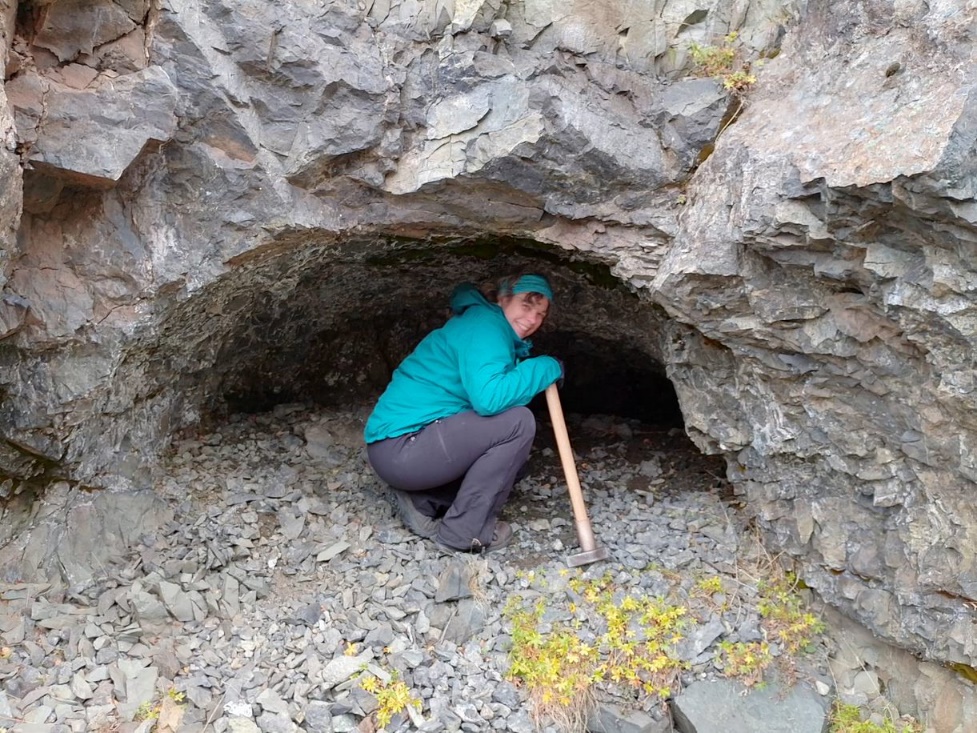
Julia at a field site in Iceland. This area was once mined for Iceland spar, a transparent variety of calcite (calcium carbonate); the cave is probably a result of the mining activity. The miners did not leave anything interesting for the geologist!
Around this time, using computer models started to become a major component of Earth sciences, so it seemed like a good area to get into. For my PhD, I studied rocks in the Earth’s lower crust, beneath the Barents Sea, in the Arctic. My study area was a huge, deep basin under the ocean, so it was impossible to access the rocks directly. But it’s an area of interest because it’s a site for oil exploration. To understand how this deep basin could have formed, I modelled how the rocks behave if you put them under different temperature and pressure conditions or changed their compositions
After spending two years studying how early Earth rocks were formed, I started to get interested in fluid-rock interactions in low-temperature conditions (low, in this case means around 150 °C!). That was the beginning of the connection between the geology I was studying and astrobiology. Could the kind of modelling I was doing be applied to other planets, such as Mars?
This might be a stupid question but when you say ’modelling’, what does that mean?
There are very many different types of modelling but we generally use it to mean simulating something with a computer program. We can’t make a model as complicated as nature is; nature is very beautiful but very complex. And geological time scales are very, very, very long; we can’t observe the processes a rock would go through in reality. We can take tiny, fingernail-sized pieces of rock and put them under high temperatures and high pressures in the laboratory, but the experiments are quite restricted.
Modelling complements experimental work. In the models, I can change the environment to understand what rocks do in different conditions, with different fluids or gases. Let's say we have a basalt that has just come out of a volcano in Iceland. I can use my models (like the one below) to ask questions such as ‘what would that rock do if I put it into a mountain range like the Alps, where it comes under a lot of pressure and high temperatures and is exposed to different fluids?’ Or even ‘how would that rock behave if it were on a different planet, such as Venus?’
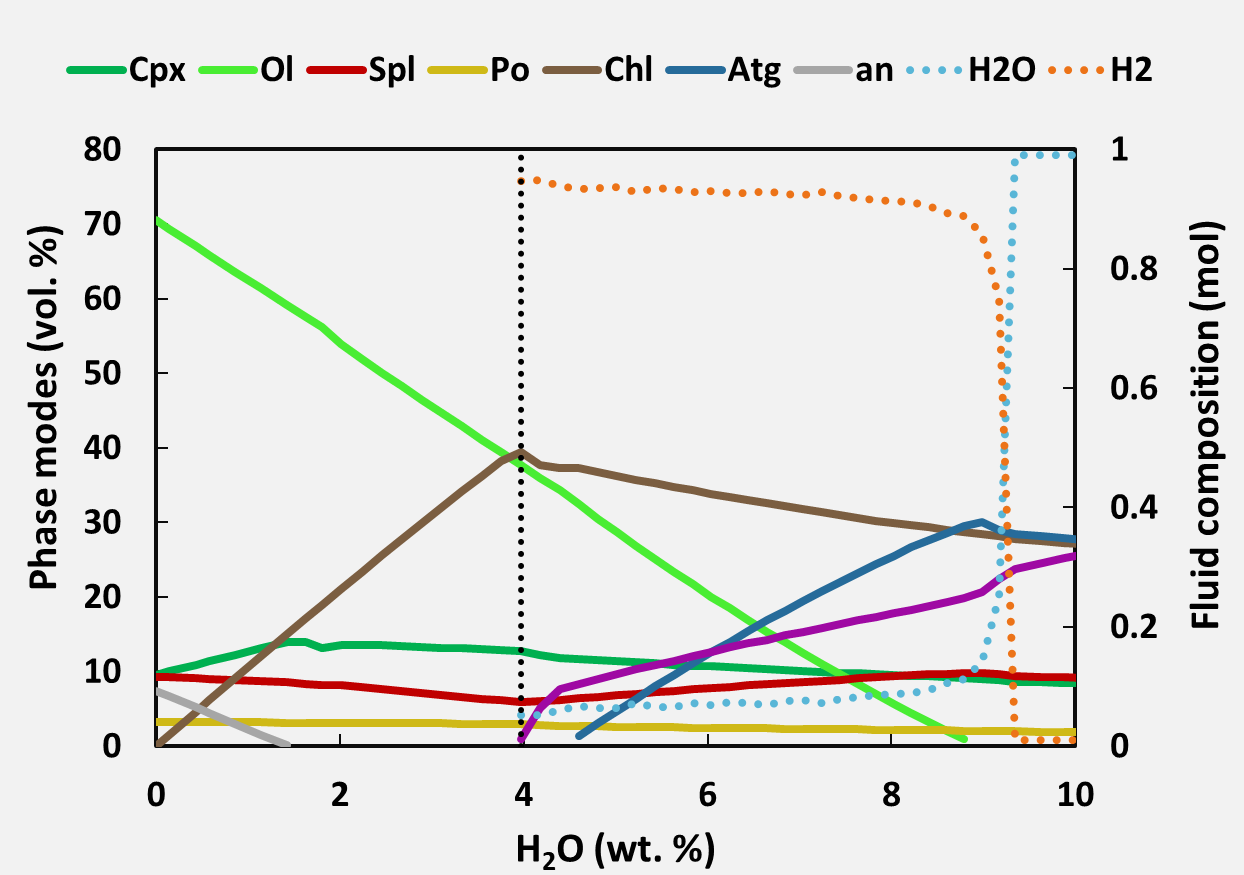 Y
Y
Model showing changes in mineral abundances (coloured solid lines) and fluid composition (dashed lines) as increasing amounts of fluid are added to a meteorite (at fixed pressure and temperature).
You’ve mentioned that a lot of your modelling looks at fluid-rock interactions. Why are fluids so important?
Fluids are always there. On Earth, it’s almost impossible to have a completely dry location. Even the mantle, deep below the Earth’s surface, has a certain amount of water. That’s the uniqueness of our planet. We have so much water.
We haven’t yet found life that doesn’t need water. If we think about other planets, such as Mars, we know that right now, there’s not a lot of water on the Martian surface. We know water used to flow on Mars, because it has the remains of river deltas and lakes. The question is, where did it all go? Was it lost to the atmosphere or is it now under the surface?
That’s where I come in, modelling what might be happening in the subsurface. I try to understand how the fluids on Mars react with the rock and what happens afterwards. What do the fluids look like? Could the fluids be habitable? Could the conditions in the rocks create an environment where life could survive, protected from the harsh conditions and extreme temperature variations on the surface?
I know you’re also interested in modelling processes on Venus.
Yes, models are very, very important in Venus research. It’s not easy to study Venus directly. For one thing, Venus has a very thick atmosphere. From an orbiting craft, we cannot really see the surface features with a standard camera. If you look at the amazing pictures of Mars taken from orbit, you can see every feature: the huge canyons of Valles Marineris, the ice poles, the differences between the north and south … But on Venus we cannot see anything other than the cloudy cover.
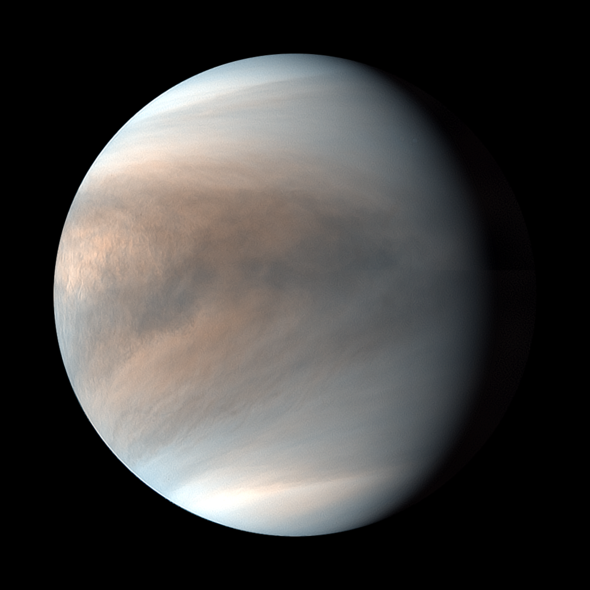
Image: JAXA / ISAS / DARTS / Damia Bouic
A synthesised false colour image of Venus using ultraviolet channels from the UVI camera on JAXA's Akatsuki spacecraft. Venus's surface is hidden by the thick cloud cover.
We know something about the atmosphere of Venus. It's about 98% carbon dioxide, a little bit of nitrogen, a few sulfur compounds, a little water. The sulfur compounds make it acidic, which corrodes anything going through the atmosphere. It’s also very hot – about 470 °C. It’s really hard for anything to survive in Venus’s atmosphere, which is why most of what we know comes from orbiting spacecraft.
We have a little bit of evidence about Venus’s geology, gathered by the Venus landers of the 1980s. From them, we know that the Venusian surface is mainly composed of a type of rock called basalt, but there are lots of areas of Venus we know nothing about. That’s why we’re really excited about the new missions planned to Venus (EnVision, DAVINCI, Veritas and ISRO). They will be able to look in much more detail and at greater resolution than previous missions. In many cases, we know roughly what feature is there, but we have no idea how the details look like. We know there are places that look like they might be fresh lava flows, but are they really? And if they are, what kind of lava are they?
With all that carbon dioxide and high temperatures, Venus must be suffering from galloping greenhouse effect! Venus is our neighbour in the Solar System. I imagine that looking at Venus could tell us something about the future of our own planet.
Venus is very similar to Earth in many aspects. It’s the same size. It has the same mass and same density. It could have been Earth's twin. But during its history, something happened. We know that it lost its water but we don’t know how much water it had. For example, did Venus have enough water for the planet to be covered in oceans?
Looking at Venus is also very helpful for studying planets in other solar systems. Many exoplanets are Venus-like (hot, with a thick atmosphere, slowly rotating, relatively close to their star), so understanding what happens on Venus and how it could have developed might help us understand other planets.
What's in the future for you? What's the next question you'd like to be asking in your research?
Oh, there's a lot of exciting stuff! I’ve just come back from fieldwork in Iceland, studying an extinct hydrothermal system in a volcanic rock, basalt, that once had fluids flowing through it. The fluids themselves aren’t there now – they’re fluids, they flowed away! – I can only see what the fluids did to the rock a couple of million years ago by looking at the minerals that formed there. I’ve brought samples back to put under the microscope and analyse in the lab. I'm pretty sure there will be a lot of questions coming up once I have the chance to look at the samples I gathered, because science is never straightforward.
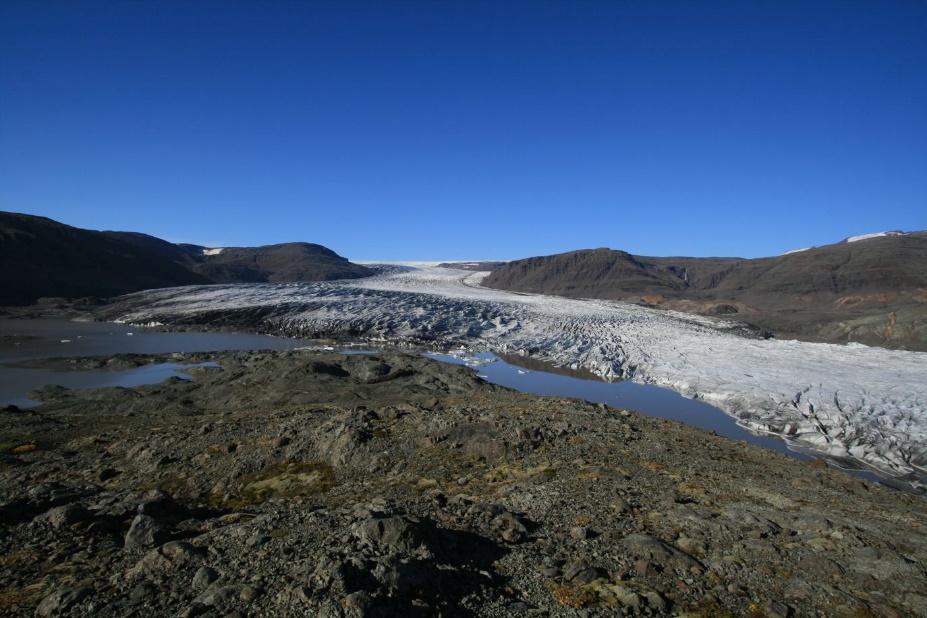
View of a part of the field site in Iceland. Due to the retreating glacier, we now have better access to the volcanic rocks (basalts) of a former volcano and hydrothermal alteration (rocks in the lower half of the image).
From the minerals, I can get a good idea of what kind of fluids were present when the minerals formed. From that, I can work back to understand what the composition of the fluid was. And because the area of Iceland where I did my fieldwork is very close to conditions on Mars, that will give me an idea of what fluids could have been present on Mars.
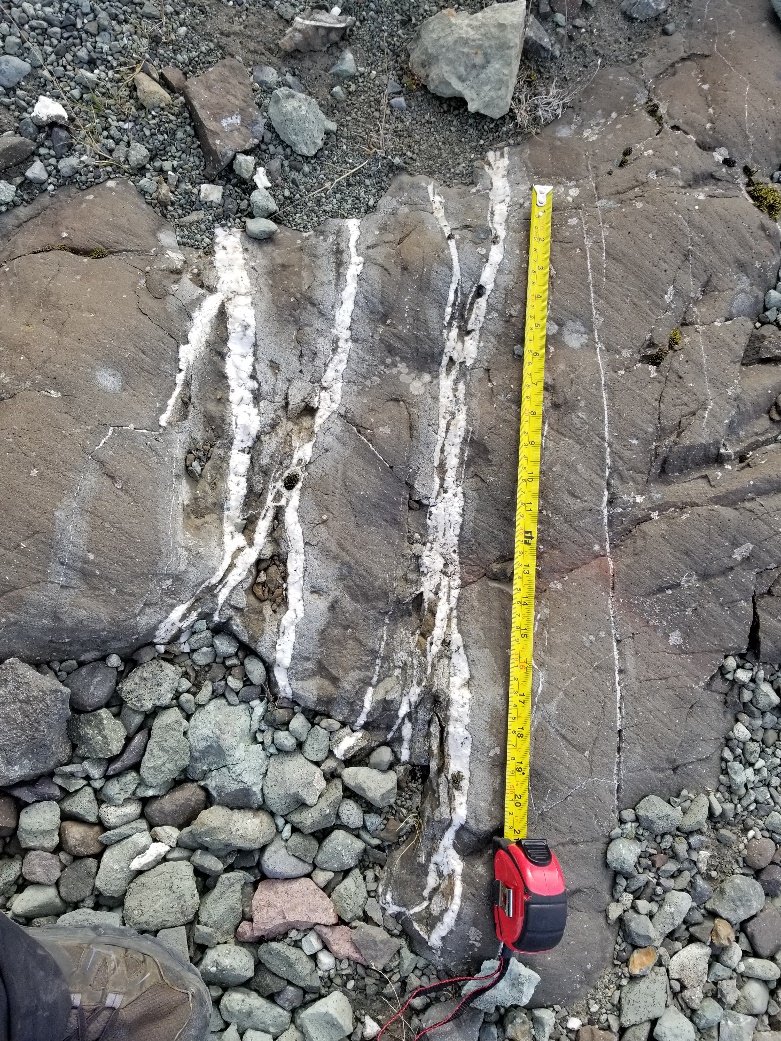
Veins formed by hot fluids circulating through volcanic rocks in Iceland. Once the fluids cool below a certain temperature, minerals are precipitated. Similar environments might have existed on Mars, which is why we used this area as an analogue site.
I’m also interested in how fluids are recycled on planets like Mars that don’t have tectonic activity, as we do on Earth. Mars used to be volcanically active but we don’t see any activity currently. On the other hand, some of the volcanic activity we see evidence of might have happened as recently as ten thousand years ago. That’s just yesterday, in geological time scales.
On Venus, I’m very interested in the composition of the Venus Highlands. The Venus Highlands have some features that look very similar to Earth's continents but we don’t have enough data to be sure. Are they actually similar to Earth’s continents, and if they are, what does that mean for Venus? Could they have formed in a similar environment to Earth? There’s some speculation that Venus might still be volcanically active. If future missions find fresh lava flows, it might confirm that.
I’ll use the data I gathered in the Icelandic basalt to create a model of exactly that set of rocks, which I’ll be able to compare with my actual observations. And once I’m happy with the match between the model and the observation, I can change the parameters of the model to match conditions on Mars, or Venus, or even one of the icy moons, and see what happens. That’s the beauty of a model.
 This article is part of the Astrobiology Collection on OpenLearn. This collection of free articles, interactives, videos and courses provides insights into research that investigates the possibilities of life beyond the Earth and the ethical and governance implications of this.
This article is part of the Astrobiology Collection on OpenLearn. This collection of free articles, interactives, videos and courses provides insights into research that investigates the possibilities of life beyond the Earth and the ethical and governance implications of this.
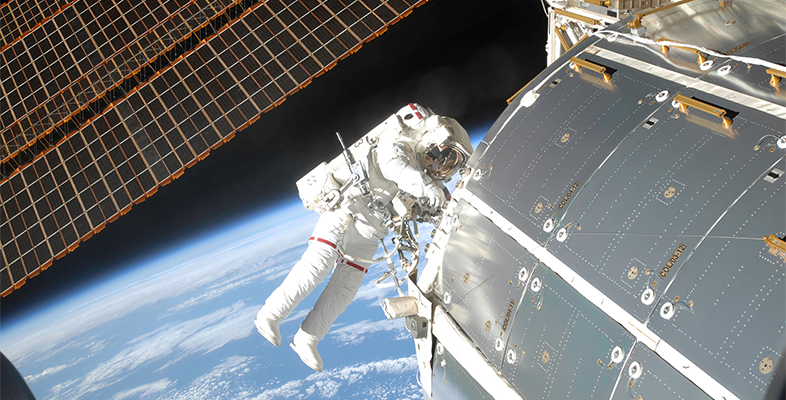
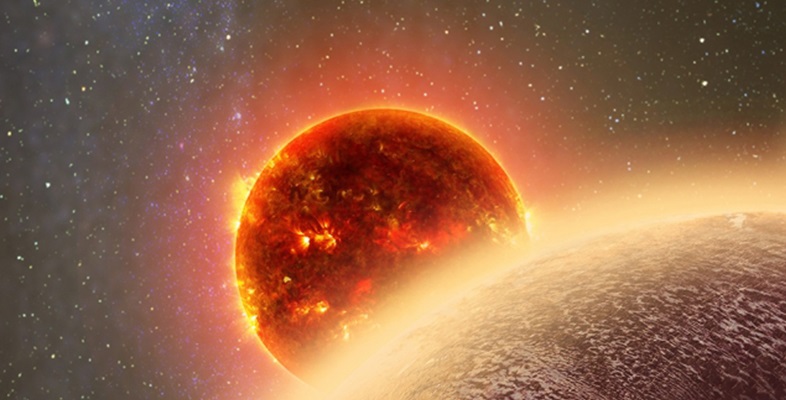
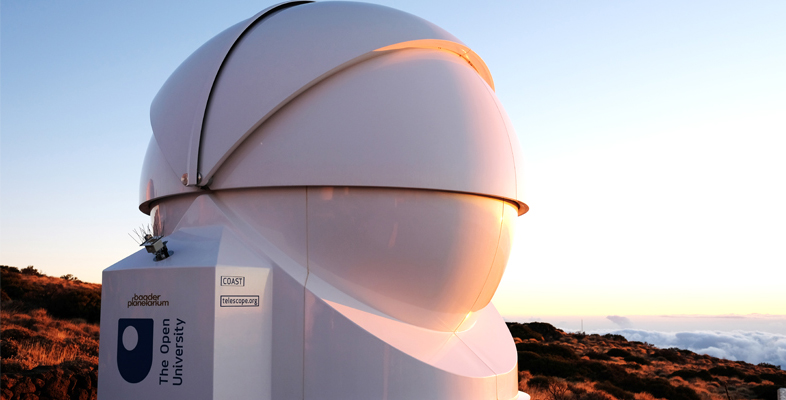
Rate and Review
Rate this article
Review this article
Log into OpenLearn to leave reviews and join in the conversation.
Article reviews